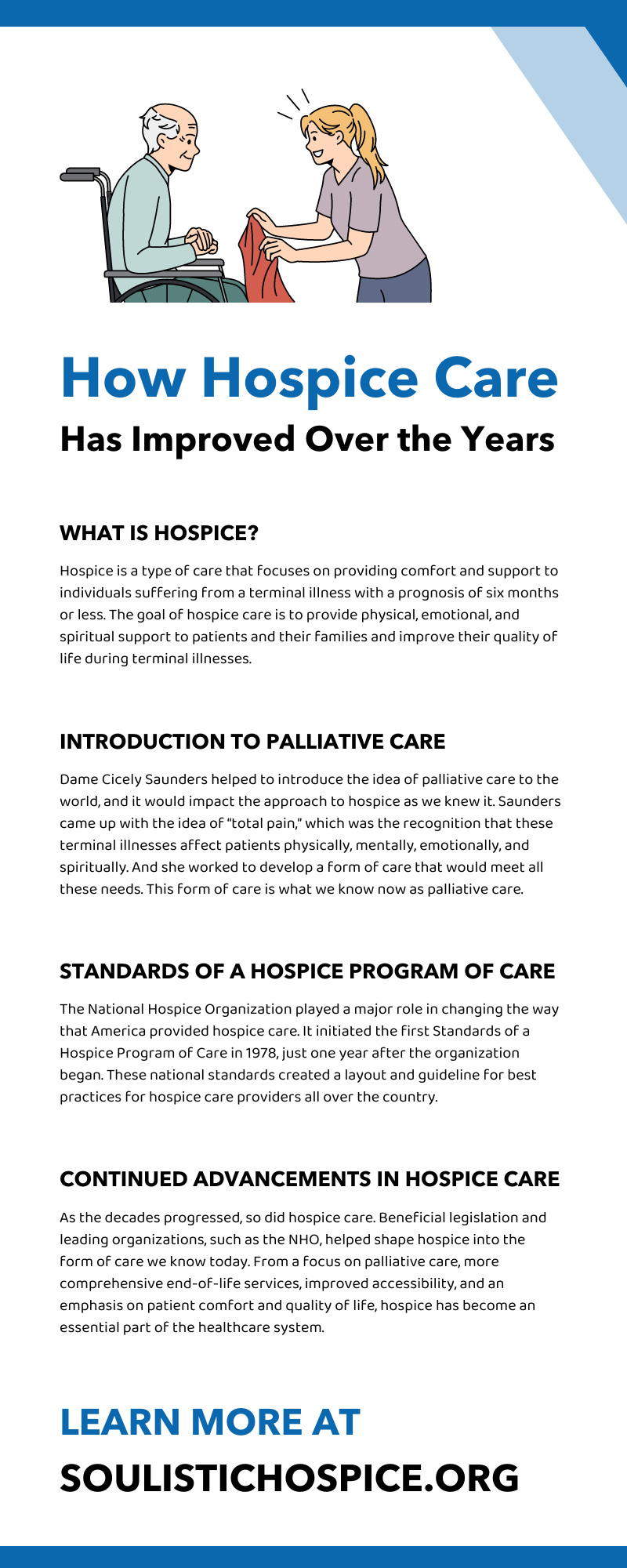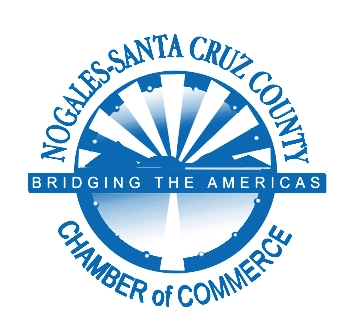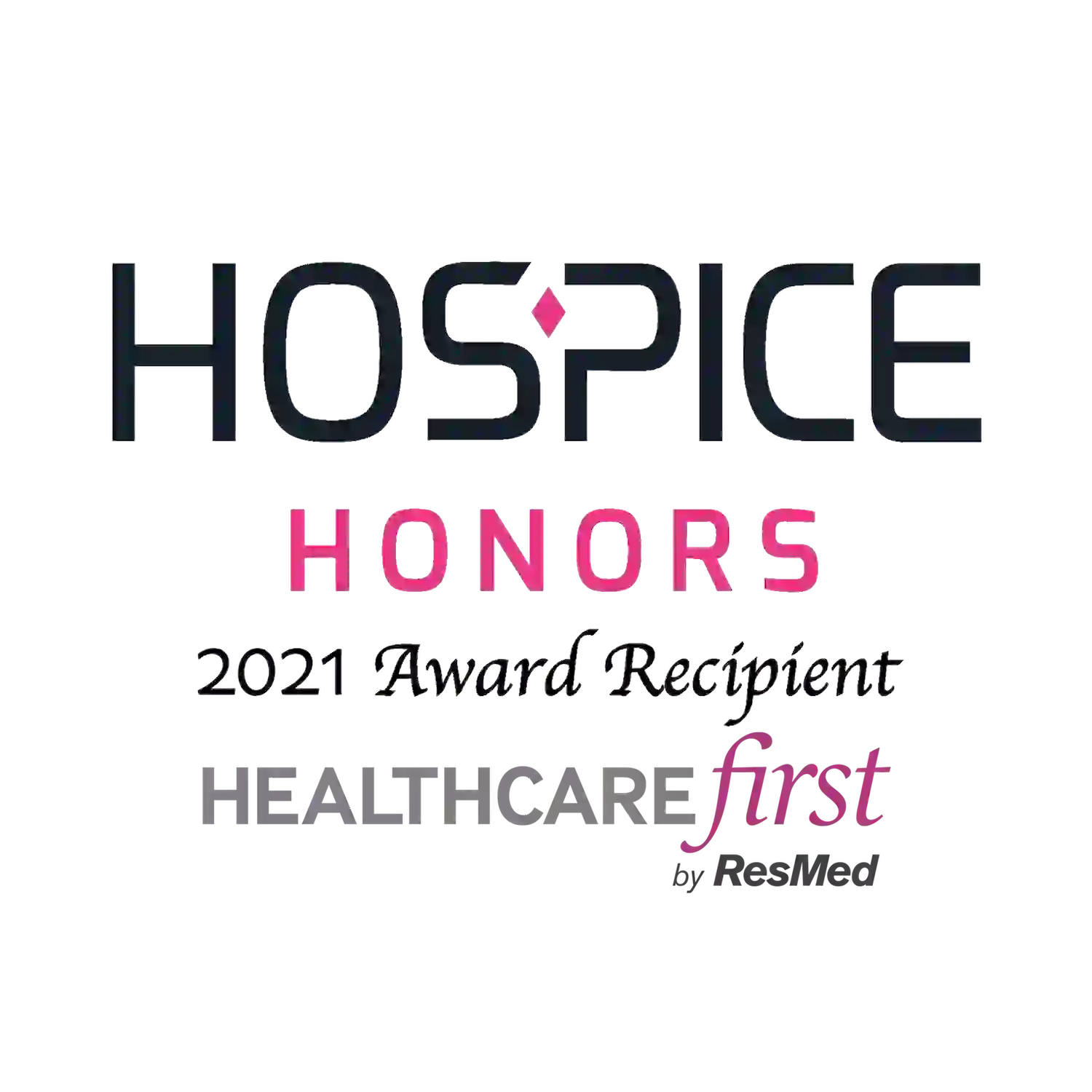
Hospice care aims to provide physical, emotional, and spiritual support to people with terminal diagnoses. As well as offer support to the families of these individuals through bereavement care and grief counseling. However, hospice wasn’t always the way it is today. These services have come a long way since their inception generations ago. With increasing awareness of end-of-life care options and holistic approaches to health, hospice has made many advancements. This evolution resulted in a compassionate, comprehensive, and empowering form of care that is available and accessible to hundreds of thousands of people today. Here, we’ll explain how hospice care has improved over the years.
What Is Hospice?
Hospice is a type of care that focuses on providing comfort and support to individuals suffering from a terminal illness with a prognosis of six months or less. The goal of hospice care is to provide physical, emotional, and spiritual support to patients and their families and improve their quality of life during terminal illnesses. Typical care plans include pain control and symptom management to help those nearing the end of life feel as comfortable as possible throughout this challenging time. Hospices offer different types of services, such as at-home care, respite care, inpatient care, and bereavement care for the families of the patient.
Origins of Hospice Care
You can trace the origins of hospice care back to Europe in the 11th century when monasteries provided safe havens for the sick and terminally ill. The care in those days was not medically advanced but was a means of support and assistance for those in need. It took centuries for hospice to advance to the structured form of care it is today. Major shifts began when Dame Cicely Saunders opened the world’s first modern hospice care facility, St. Christopher’s Hospice, in London in 1967. We have Saunders to thank for establishing much of the groundwork of palliative care. Not long after opening her hospice center in London, interest in her work, philosophy, and approach to care began growing in the medical community worldwide.
Introduction to Palliative Care
Dame Cicely Saunders helped to introduce the idea of palliative care to the world, and it would impact the approach to hospice as we knew it. Saunders came up with the idea of “total pain,” which was the recognition that these terminal illnesses affect patients physically, mentally, emotionally, and spiritually. And she worked to develop a form of care that would meet all these needs. This form of care is what we know now as palliative care. And palliative care provides essential support for individuals through pain control, symptom management, emotional support, spiritual guidance, and other necessary assistance. This form of care typically involves a team of doctors, nurses, social workers, chaplains, and other healthcare professionals.
Establishment of the National Hospice Organization
Another significant advancement in the world of hospice came when the National Hospice Organization (NHO) was established in 1978. This organization was founded as a non-profit that was one of the earliest organizations of its kind, dedicated to providing hospice and palliative care to people in the United States. The NHO quickly became a leading voice in the advancement, promotion, and advocacy of hospice and palliative care and helped countless individuals and their families facing end-of-life situations. The organization did the necessary research to lay out the official standards of care for hospice and pushed for legislation to make these services more accessible to the public.
Standards of a Hospice Program of Care
The National Hospice Organization played a major role in changing the way that America provided hospice care. It initiated the first Standards of a Hospice Program of Care in 1978, just one year after the organization began. These national standards created a layout and guideline for best practices for hospice care providers all over the country. These standards were important to the advancement of hospice care because they changed how hospice care facilities practiced patient care. Palliative care was now the focus within the hospice community, and facilities worked to implement care plans that met the physical, emotional, mental, and spiritual needs of patients and their families.
Medicare Hospice Regulations and Benefit
In 1982, congress included a provision to create a Medicare hospice benefit, and in 1983, the Federal Register published the Initial Medicare Hospice Regulations. These two events had a major impact. Before the benefit and regulations, hospice care often lacked shared decision-making and palliative treatment options for patients. These regulations required hospice facilities to provide evidence-based care and additional services to patients and their families, such as respite care, bereavement care, emotional counseling, and spiritual support. The Medicare hospice benefit was instrumental because it provided coverage for medical supplies, medications, equipment, hospice care, nursing care, and other specialized therapies that made hospice care more accessible.
Continued Advancements in Hospice Care
As the decades progressed, so did hospice care. Beneficial legislation and leading organizations, such as the NHO, helped shape hospice into the form of care we know today. From a focus on palliative care, more comprehensive end-of-life services, improved accessibility, and an emphasis on patient comfort and quality of life, hospice has become an essential part of the healthcare system. With the compassion, understanding, and collaborative effort of hospice staff, medical professionals, and patient families, individuals suffering from terminal illnesses can rest assured knowing they can access the best possible care. It’s important to remember that these healthcare advancements and how they are offered take time. But with the right effort and support, we can truly make a difference in the world and the lives of countless individuals.
Now that you know some of the ways hospice has advanced over time, you can better understand this essential form of care. We have many people and organizations to thank for all the positive changes in healthcare throughout the years, and patients can now receive high-quality care at the end of life. If you or a loved one are looking for hospice medical care in the Tucson greater area, check out Soulistic Hospice for our hospice services.









